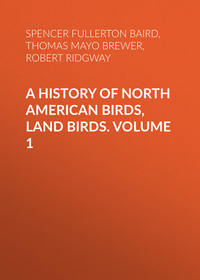A History of North American Birds, Land Birds. Volume 2
 полная версия
полная версияA History of North American Birds, Land Birds. Volume 2
Жанр: учебная и научная литературазарубежная старинная литературазарубежная образовательная литературабиологиязоологиязнания и навыки
Язык: Английский
Год издания: 2018
Добавлена:
Настройки чтения
Размер шрифта
Высота строк
Поля



